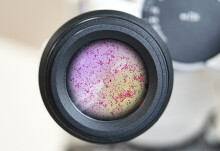

Congratulations to the Magnetometer Team on the Cassini spacecraft, led by Michele Dougherty.
Congratulations to the Magnetometer Team on the Cassini spacecraft, led by Michele Dougherty, who have won the Group Achievement Award in Geophysics, formally announced today by the Royal Astronomical Society.
The Cassini-Huygens mission to the Saturn System is a joint NASA, European Space Agency, ASI venture and one of the most successful ever undertaken. After a cruise of 7.5 billion kilometres, Cassini went into Saturn insertion orbit on July 1, 2004, when it flew through the gap between the F and G rings. It was designed to last just 5 years, but is still going strong, and now scheduled to last until 2017, when it will fly through Saturn’s upper atmosphere before plunging into the kronian depths.
I am very honoured that the Cassini magnetometer team has been recognised by the RAS in this way. It is been an extremely rich and rewarding experience to work closely with such a fantastic group of scientists and engineers from the magnetometer team, other Cassini instrument teams and the Cassini Project. I look forward to continuing the very fruitful collaboration we’ve all had in the remaining 4-years of the mission at Saturn.
– Professor Michele Dougherty
The Magnetometer has been one of the most successful instruments aboard the spacecraft, continuously returning data about the fields in the peri-kronian environment, through the ringed planet’s bow shock and magnetopause and deep inside its magnetosphere. One of the key findings of Cassini – and one of the most unexpected and scientifically challenging – was that the small, icy moon Enceladus is pouring a jet of water into Saturn’s magnetosphere. This finding is a direct result of the efforts of the Magnetometer Team and its Principal Investigator, Professor Michele Dougherty.
Professor Dougherty and her team noticed unusual magnetic field patterns as the spacecraft flew by Enceladus, and persuaded the entire mission team that this required further close fly-bys. The result was the discovery of the Enceladus jet, now understood to be the main source of plasma inside Saturn’s magnetosphere. As a result, we now understand that Enceladus must harbour vast quantities of water in its interior, making it – along with Mars and the icy moons of Jupiter and Titan - as potentially habitable (though not necessarily inhabited).
The Magnetometer Team have played a critical role from the beginning of the Cassini-Huygens mission. They will be there right to the end.
Article text (excluding photos or graphics) available under an Attribution-NonCommercial-ShareAlike Creative Commons license.
Photos and graphics subject to third party copyright used with permission or © Imperial College London.
Reporter
Caroline Jackson
Department of Physics

Contact details
Email: press.office@imperial.ac.uk
Show all stories by this author




Leave a comment
Your comment may be published, displaying your name as you provide it, unless you request otherwise. Your contact details will never be published.